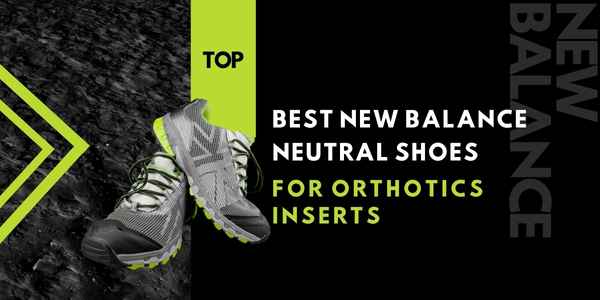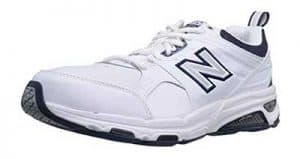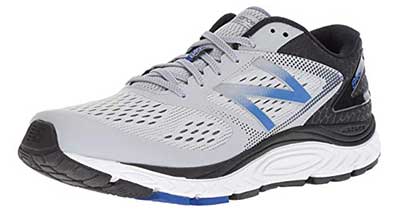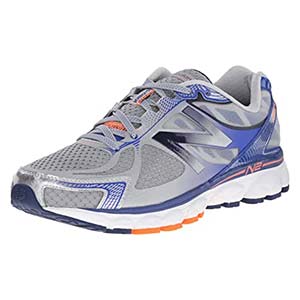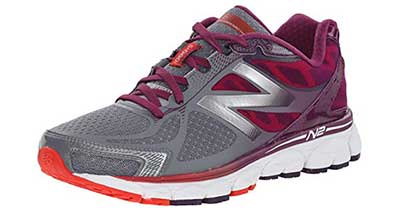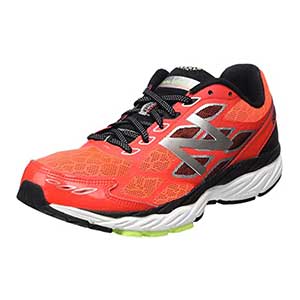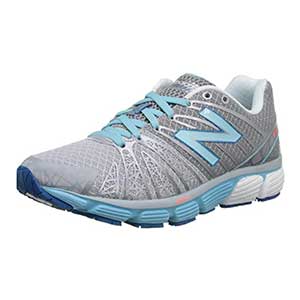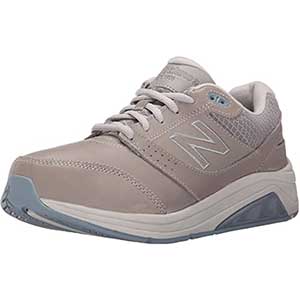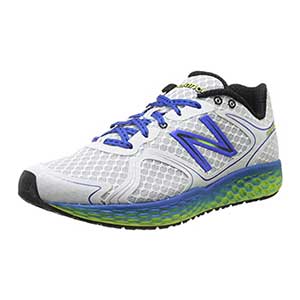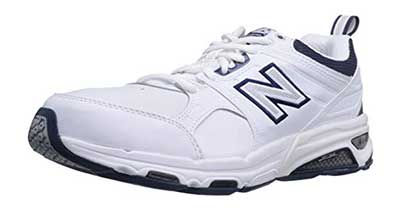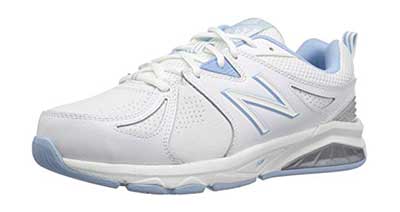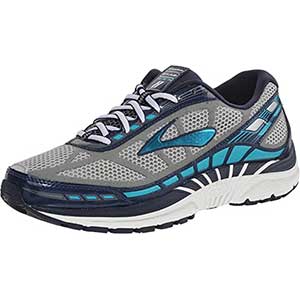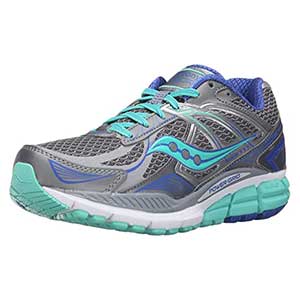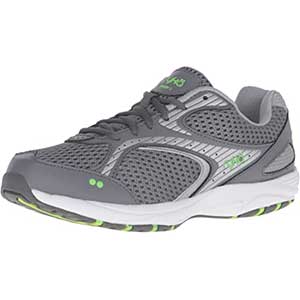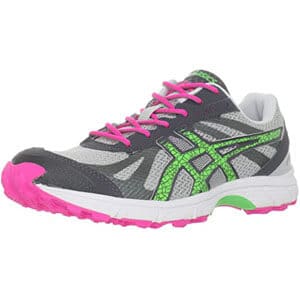Discover the Best New Balance Neutral Shoes for Orthotics Inserts for comfort, support, and durability. Perfect for everyday wear, these shoes provide the ideal fit for orthotic users seeking style and performance.
The New Balance shoes are the most widely recommended shoes by podiatrists for custom orthotic inserts because New Balance offers a wide variety of sneakers and dress shoes for problem feet. If your Podiatrist has prescribed custom orthotics for your foot problem, then New Balance’s Neutral running shoes are one of the best for Orthotic inserts.
Neutral shoes offer a lot of cushioning but do not help correct pronation problems. You can also use motion-control shoes for orthotics, but neutral shoes are generally more effective. Do not use stability shoes, as you do not want to wear two things to overcorrect overpronation. However, you can use motion-control shoes for orthotic inserts.
Contents
What are orthotics?
Orthotics are shoe inserts to correct pronation and other foot problems and help align feet correctly to avoid injury. They provide additional arch support to the feet. They also provide cushioning and stability. Podiatrists make shoes that fit the feet better than over-the-counter insoles. Buy Neutral running shoes with a removable footbed to insert orthotics.
Orthotics can be used with or without foot problems. Foot problems are widespread and can be very debilitating. The foot is a fundamental support mechanism for the rest of the body, so when the arch cannot sustain weight and collapses, the person is at risk of injury to the muscles and ligaments. Problems with overpronation are not just due to discomfort. It can lead to health and mobility problems elsewhere in the body.
A podiatrist can advise you on the best action to resolve your foot problems. Typically, they will prescribe orthotics for you to insert into your shoes to correct your gait and prevent overpronation. If you have been advised to wear custom orthotics, you will quickly realise that not all shoes are compatible with them. In addition, you will need to start emphasising comfort, as ill-fitting footwear can contribute to problems such as plantar fasciitis.
5 Best New Balance Neutral Shoes for Orthotics Inserts
| Image | Product | Details | ||
|---|---|---|---|---|
|
BEST PICK
|
BEST PICK
|
|
Check Price for MenPrice for women | |
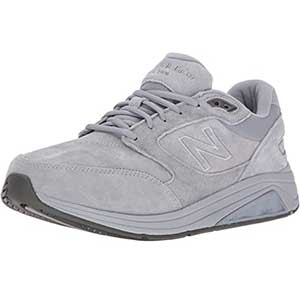 |
|
Check Price for MenPrice for women | ||
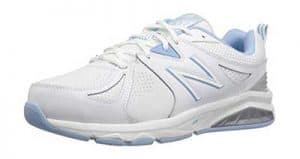 |
|
Price for women | ||
|
BEST PICK
|
BEST PICK
|
|
Check Price for Men | |
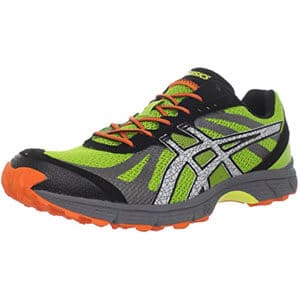 |
|
Check Price for MenPrice for women |
What Kind of Shoes to Buy for Orthotics?
To ensure a comfortable fit, look for features such as a removable footbed and a wide, deep toe box. The New Balance shoes with the SL-2 last will provide a deep, wide toe box and a snug heel so your heel will not slip off while walking. You may also need shoes half to one size larger, and they may need to be one width size up from your regular width.
If you suffer from overpronation, you will also need to find shoes that give firm support in the heel, and you may benefit from shoes that are ergonomically designed for greater motion control. Several brands cater to the needs of overpronators. But one of the industry leaders, recommended by most podiatrists, is New Balance.
Best New Balance Neutral Shoes for Orthotics Inserts –
1. New Balance 840 Neutral Running Shoes for Men and Women
One type of footwear frequently recommended as one of the best shoes for orthotic inserts is the New Balance 840, thanks to its broader and deeper toe box. The technology and features utilised in the shoe are all geared towards making it a high-performance running shoe. A New Balance 840 walking shoe is Diabetic approved and has been recognised as one of the most comfortable and best-fitting shoes available.
The New Balance 840 running shoe is very similar in construction to the 928, both built on the SL2 last, with a slight rocker sole and unparalleled cushioning. It uses ABZORB technology for maximum shock absorption and flexibility. This style is particularly popular among people with wide feet and high arches.
New Balance 840 running shoes are among the best for orthotic inserts and offer a lot of cushioning.
2. New Balance 1080 V5 Neutral Running Shoes for Men and Women
The New Balance 1080 has been designed with comfort as a priority. They are also relatively lightweight, which makes them an excellent choice for people who do not like heavy running or casual shoes. Breathable mesh upper and high-quality synthetic materials combine with New Balance’s cushioning technology to make a shoe perfect for all-day wear or long-distance running.
The premium cushioning comes primarily from the ABZORB crash pad, which reduces heel strike, and the blown rubber outsole. There is also a full-length Strobel board, which increases cushioning and comfort throughout the entire step rather than focusing solely on the foot’s impact on the ground.
The New Balance 1080 is also ideal for people with foot problems, as it offers excellent stability and traction. A new T-beam midfoot shank enhances stability without compromising on flexibility. They feature a wide toe box and a narrow heel.
3. New Balance 880v5 Running Shoes
The New Balance 880 is ideal for people with custom orthotics who have a wider foot and may ordinarily struggle to find shoes with a wide enough toe box. It is one of the lightest, most responsive, and most flexible shoes in the New Balance range because the manufacturer has reduced the height of the heel and midsole without compromising on cushioning or support.
This also makes the shoes an excellent choice for people who find orthotic-friendly footwear heavy. The shoes have a breathable upper to ensure all-day comfort. They have narrower heels than New Balance 1080.
4. New Balance 890V5 Running Shoes for Women
The New Balance describes their 890 footwear as “the lightest ever.” This is a world-class running shoe designed for professional athletes. However, the shoe also has several features which make it suitable for orthotic inserts. The shoe is generously wide, and the lacing is strategically placed for a firm fit. The boots also feature an Ndurance rubber sole to absorb impact and welded seams to prevent chafing.
One of the few criticisms of the shoe is that its cushioning could be more robust than that of other New Balance shoes. This may be something to keep in mind if your lifestyle or profession means you spend a lot of time walking or standing.
One thousand twelve cross trainers offer removable insoles and are the best option for Zumba dance. They provide lateral support for that kind of activity. They offer better cushioning than other cross-trainers. All cross trainers offer less cushioning than running shoes.
People who like barefoot-style shoes can try Foam Fresh. They offer a 4 mm drop, like barefoot shoes, but have more cushioning. For thick orthotics, try the 1080 v5, which provides a deeper toe box than the previous 1080 v4. 880 has similar qualities but narrower heels.
5. New Balance 928v2 Walking Shoes
If you need an everyday walking shoe with orthotic inserts and have a pronation problem, then the New Balance 928v2 motion-control shoe will work for you. For those who need shoes with narrow heels and wide toe boxes, the New Balance 928v2, built on the SL2 last, solves the problem. They are among the best shoes for orthotics because they offer maximum cushioning and support. They are among the most commonly recommended by podiatrists.
If you stand or walk all day or have foot problems, knee pain, or back pain, try them for custom orthotics. Customs Orthotics will fit into these shoes very nicely because they offer wide-width sizes and deep, wide toe boxes. The rigid rocker sole will provide maximum support.
6. New Balance 980 Shoes
If you need barefoot-like shoes with the 4mm drop that can accommodate orthotics, try 980 shoes. They offer a lot of cushioning, provide barefoot style, and come with removable insoles.
The Cross Training Shoes for orthotics
1. New Balance 857 Cross Training Motion Control Shoes
Need a compatible pair of orthotic shoes for the gym or everyday walking? The New Balance 857 features a removable footbed that allows you to fit your orthotics nicely. These shoes provide the best support and lateral stability. The RollBar medial and lateral posts help prevent pronation problems, including supination and overpronation.
If you have Diabetes or wide feet, these shoes are diabetic Medicare-approved and are wide enough to accommodate your giant feet. They feature an external heel counter, C-Cap EVA midsole for flexibility and cushioning, Encap EVA midsole for support and durability, and N-Ergy for added shock absorption.
You can use these shoes for walking, running, hiking, cross-training, and tennis activities. These shoes work well for custom orthotics.
2. Brooks Dyad 8
If you need the best shoes for orthotic inserts, consider the Brooks Dyad 8. It features advanced technology that delivers superior comfort and ample support for a smooth, easy stride. These shoes have ample space for your custom orthotics, which is a great help for those who need some stride correction while ensuring proper heel and foot landing with each step. Not all shoes come with this feature, which is why the footwear sets itself apart.
For your orthotic inserts, wearing neutral running shoes is a must. Otherwise, you will have a problem with your movement if you wear a different shoe type. Fortunately, the Brooks Dyad 8 is a neutral running shoe that accommodates orthotics quite well. These shoes have gained popularity among individuals with flat feet, athletes, and physical fitness enthusiasts who wear orthotics.
With the footwear’s cushioned underfoot and stable platform, you can expect maximum comfort throughout your feet. The secret behind these training shoes is the midsole with BioMoGo DNA technology, which provides adaptive cushioning. What’s more, the interior is roomy and breathable, and there are no-sew overlays that tend to irritate. You will feel like you are walking on clouds with these fantastic shoes.
3. Saucony Echelon 5
Another neutral shoe worth your investment, the Saucony Echelon 5 is an outstanding choice for those seeking proper footwear for their orthotic inserts. It has a brilliant shape that suits individuals with a low arch and wide feet. In addition, these shoes are regarded as straight-lasted, meaning they mould to a sight-lasted mould. Hence, people who wear orthotics and other inserts will find this product ideal for their needs.
As for the platform’s straight shape, it is perfect for flat-footed people with low arches.
Although these shoes have a wider fit and a straight last, there is no clunkiness to the footwear. You can expect a smooth stride with these shoes, thanks to the Powergrid midsole. With sufficient cushioning underfoot, you should experience a lighter, more comfortable feel with every move, which is what you want in a pair of quality shoes.
As for the uppers of these shoes, these are designed and built so your feet are always appropriately secured. You may sew some overlays in the toebox, but these do not cause irritation or discomfort. The uppers are flexible, light, and comfortable, adding to your satisfaction.
The main selling point of these shoes is the lightweight feature. It may share some similarities with other footwear, such as the Brooks Dyad 8 and Asics Gel-Fortitude 7, in terms of a neutral design and a straight last, but it weighs and feels much lighter than these shoes.
4. Ryka Dash
A good pair of walking shoes or sneakers must be durable, comfortable, and lightweight, whether you are wearing custom orthotics. In this case, the Ryka Dash is a fine choice because of its ultimate lightness, walking on air. While it is not so light at 8.5 ounces, it is undoubtedly perfect for taking off without the heavy load. This makes it ideal for individuals who dislike dragging their shoes around, since the Dash is so light, it feels almost like walking or running without any drag.
As for the other qualities of these shoes, the standout feature is the outsole, which is made of rubber for optimal traction. You should be able to maintain your balance and stability with the rubber outsole, preventing slips and falls. The midsole is another key feature, with its thick padding to eliminate foot pain.
These qualities are just a few of the reasons most consumers fell in love with these shoes instantly. They like the comfortable feel, the air, and the snug fit immediately after putting on the footwear. Your feet are correctly supported, no matter how far you walk or run.
Last One 5. – ASICS GEL-FujiRacer Trail Running Shoe
If you prefer a minimalist, lightweight, neutral shoe for orthotics, but most orthotic-friendly trail running shoes are heavy, what’s the solution? ASICS GEL-FujiRacer is a light trail running shoe. They are comfortable, supportive, stable, and breathable, preventing overpronation and supination. The toe box is roomy, helping prevent blisters.
They are low profile but challenging enough for running on mixed terrain, such as sidewalks and unpaved areas, but not suitable for many soft, muddy landscapes or wet, flat topography. The hole drainage, rock plate, and toe bumper are excellent features.
FAQ – New Balance Neutral Shoes for Orthotics Inserts
What types of shoes are best for orthotic inserts?
Shoes with a removable insole and a roomy toe box are ideal for orthotic inserts. Athletic shoes, walking shoes, and some dress shoes can accommodate orthotics.
Can orthotic inserts be used in all types of shoes?
Not all types of shoes are suitable for orthotic inserts. Shoes with a very shallow toe box or those that are too tight may not be able to accommodate orthotics.
How are my shoes the right fit for my orthotic inserts?
The shoes should have enough room for the orthotic insert and should not be too tight. It’s always best to try the shoes on with the orthotics in place to ensure a proper fit.
Can I use my orthotic inserts in different pairs of shoes?
Yes, orthotic inserts can be moved from one pair of shoes to another as long as the shoes are the right fit and have a removable insole.
Final Verdict
People prone to podiatric problems, such as overpronation, are at higher risk of foot pain, inflammation, and injury. A custom orthotic can help remedy the issue, but for optimal results, it must be used in a suitable shoe. The New Balance range offers some of the best footwear for overpronators and the Best Shoes for Orthotic Inserts users.
Choosing the right pair of shoes for your needs is essential in ensuring comfort. These best shoes for orthotic inserts are among the top-rated ones you can find in stores, and you can expect total satisfaction from wearing these quality shoes. Known for their excellent design, advanced technology, and support, you will not have any problem wearing your custom orthotics in these shoes.

